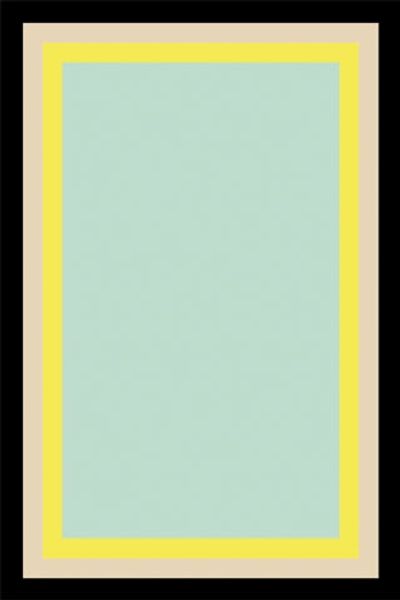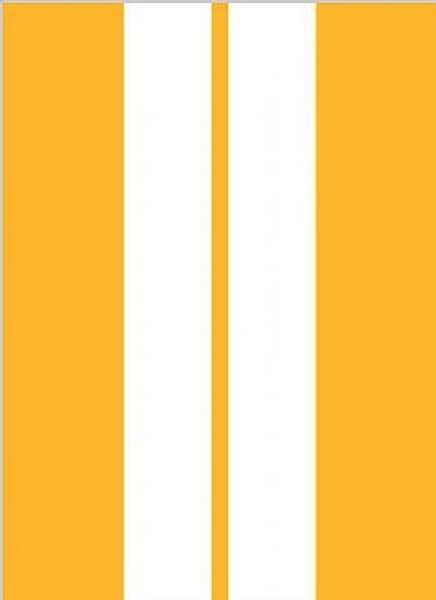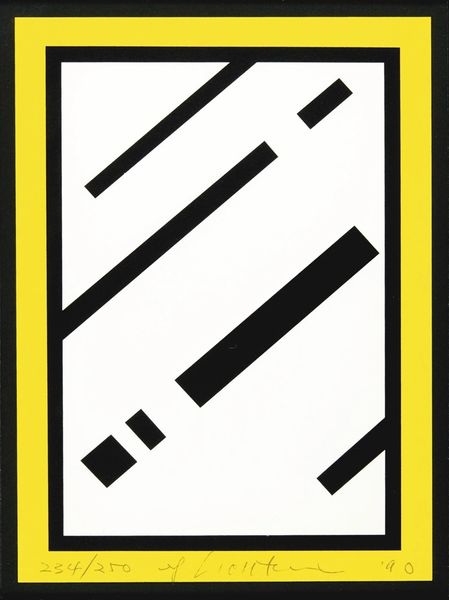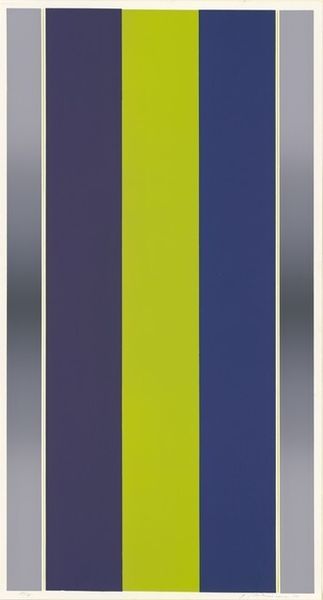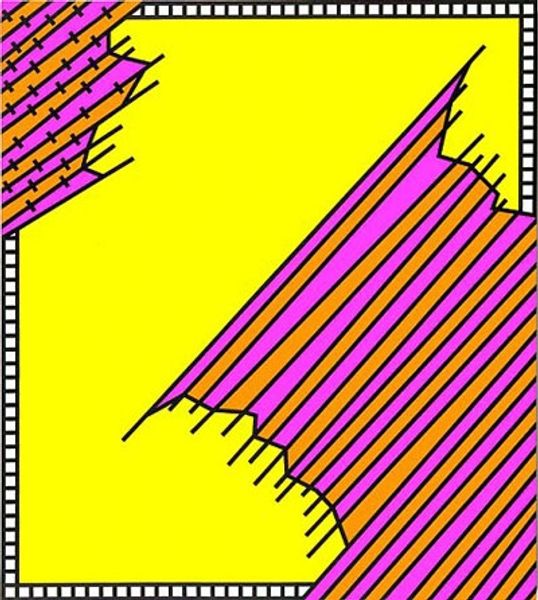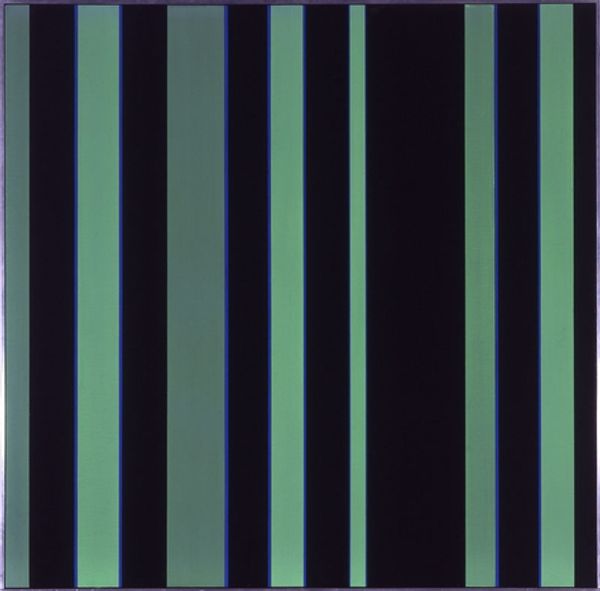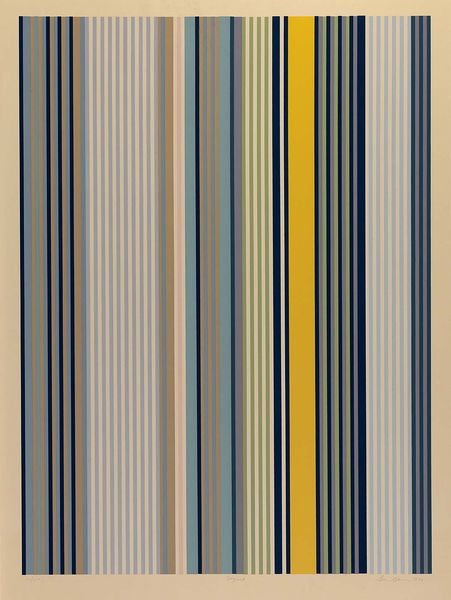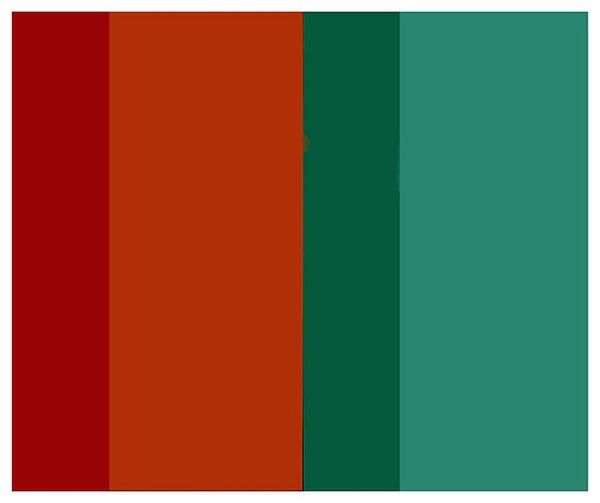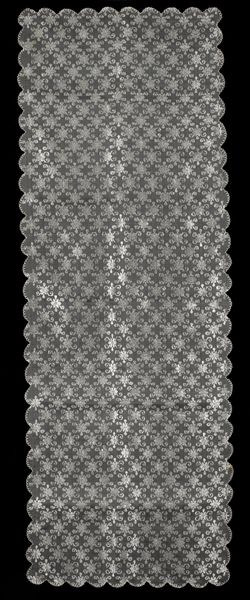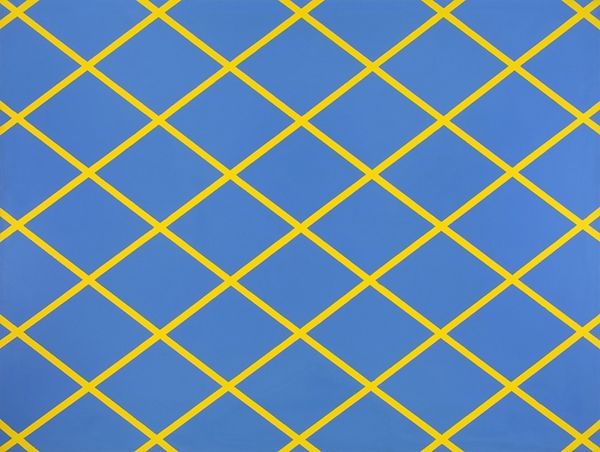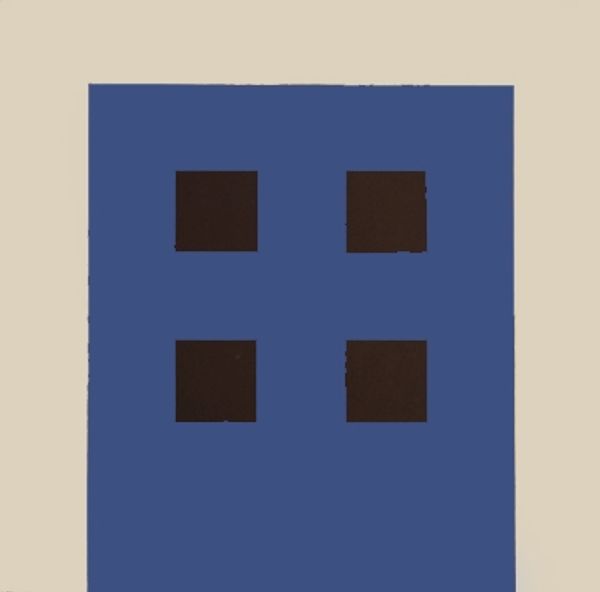
painting, acrylic-paint
#
painting
#
pattern
#
pop art
#
colour-field-painting
#
acrylic-paint
#
geometric pattern
#
geometric
#
abstraction
#
pop-art
#
line
#
hard-edge-painting
Copyright: Ronnie Landfield,Fair Use
Curator: Right now, we're looking at Ronnie Landfield’s "Series Painting 8" from 1966. It is acrylic on canvas, a strong example of color field and hard-edge painting from the era. Editor: My first thought is...stark. It's such a bold statement with so little going on. The black swallows you. It makes me feel like I’m peering into a void, a nothingness, but framed with this almost cheerful…optimism? Curator: The black void is key to understanding this piece, especially when we consider the socio-political atmosphere of the 1960s. There was intense social upheaval during the Civil Rights Movement, anti-war protests. Black, as a colour, often carries associations with mourning, the unknown, the fears associated with instability. Landfield uses this ground to emphasize not a despair, but almost a tension. Editor: I see what you mean about tension. That sickly-sweet pastel blue bordering a shockingly happy yellow around all that…emptiness? It’s so unnerving! It feels almost artificial, like a cheerful advertisement for oblivion. I keep wondering, is this what looking into a screen felt like back then? This piece is seriously pre-internet ominous. Curator: This painting directly challenges the dominance of the patriarchy and its role in defining American identity during that era. Consider who held power, what values were promoted, what voices were heard, and what colors are prominently featured. By destabilizing the male-dominated, war-driven political sphere of that period with "feminine" or decorative choices, Landfield created room for previously stifled stories of disenfranchised voices. Editor: Wow. You're right, it's so disruptive, and so gentle about it too. And it’s a "Series Painting"... Did he do other variations? Is he trying to tell us this void has infinite faces and contexts? Curator: Landfield explored similar compositions and color relationships in his other works. The series reflects his interest in pure color and form and the effects these relationships can have when explored. In our own context, this could become about the way these colours would shift the negative space that this presents. Editor: Seeing this through the lens of all that political commentary... it really unlocks the depth within what seemed, initially, like a simplistic design. So it's not really a void; it’s loaded potential, if you choose to frame it, contextualize it... which makes it almost infinitely optimistic, strangely empowering. Curator: Precisely. By placing this work into a focused moment, in a focused social situation, and by analyzing its presence as a reflection and intervention we can better discuss Landfield's purpose in disrupting form. Editor: This painting is one you keep seeing and keep noticing and interpreting on different terms and to think it could be such a powerful statement in plain sight, so accessible too, is rather exciting.
Comments
No comments
Be the first to comment and join the conversation on the ultimate creative platform.
